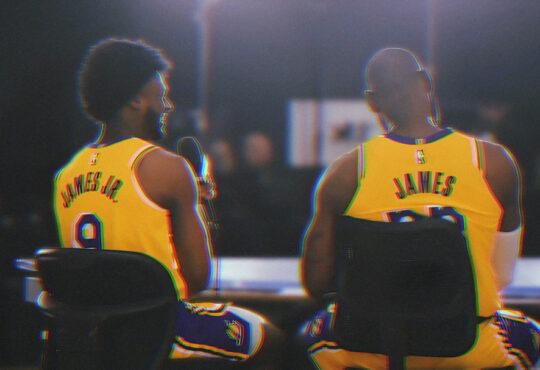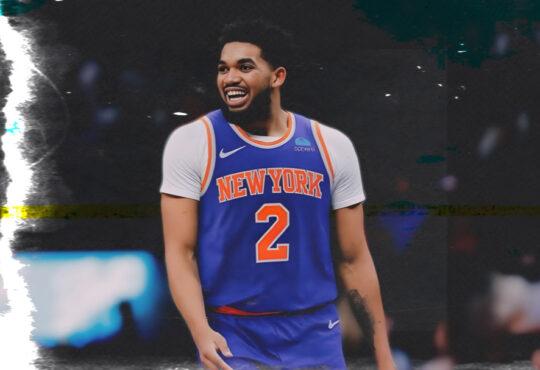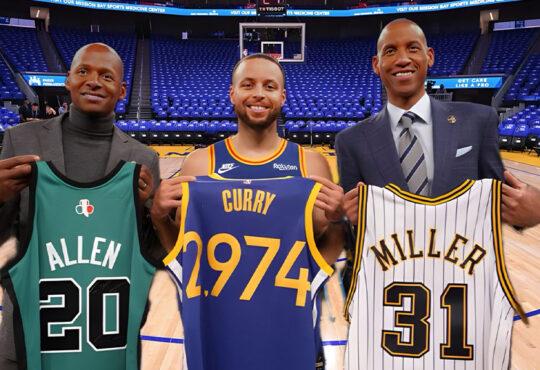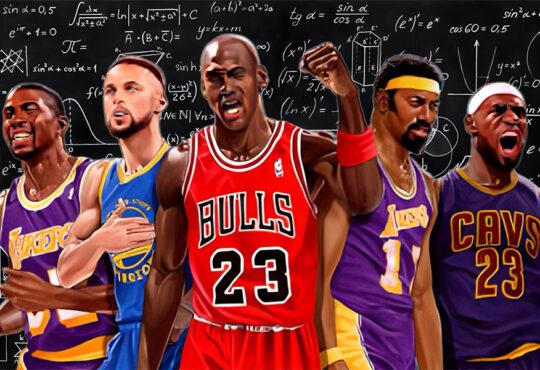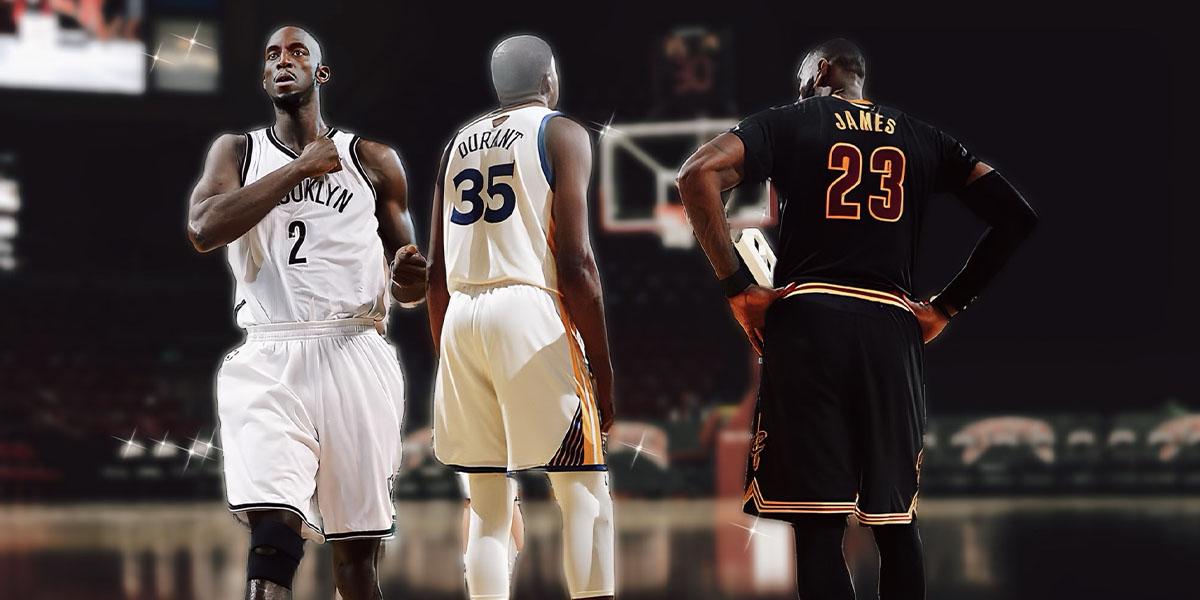
Top Unforgettable NBA Trades and Free Agent Acquisitions in History
“The Decision”: LeBron James 2010 Move and its Profound Impact on the NBA
When LeBron James made his infamous “Decision” in 2010, it sent shockwaves through the league, forever changing the public perception of star players and their sway in the NBA. Creating a spectacle out of something as simple as a free agency decision was seen as arrogant by some and revolutionary for others. Announcing on live television that he was “taking his talents to South Beach,” LeBron’s choice shook the world of sports in ways previously unforeseen.
LeBron joined the Miami Heat to partner with Chris Bosh and Dwyane Wade, creating the league’s first modern “Superteam.” The idea of three superstars joining forces in pursuit of championships was highly criticized at the time, sparking debates over the implications for league parity and the loss of traditional rivalries built through organic team growth.
LeBron faced a backlash that few professional athletes have ever experienced for leaving his hometown, the Cleveland Cavaliers. Burning jerseys in the streets of Cleveland and taking constant criticism from media, fans, and even fellow players, LeBron’s move to Miami was vilified as a betrayal. The King was accused of taking the easy path to success rather than carrying a team on his own shoulders, as his idol Michael Jordan did with the Chicago Bulls.
Despite all the vitriol, the decision proved fruitful for both LeBron and the Heat. They reached the NBA Finals in each subsequent season, winning championships in 2012 and 2013. LeBron’s dominance on the court silenced some critics, and the Heat’s success paved the way for a new era of player empowerment.
LeBron’s choice not only solidified free agency as a legitimate tool for superstars to create their own paths and control their destinies but also shifted the focus of team building towards the assembly of talent-heavy rosters. With the blueprint laid out, other teams attempted to replicate the Heat’s success by bringing together multiple star players. Since then, the NBA has witnessed the formation of numerous so-called “Superteams,” with the Golden State Warriors, Boston Celtics, and Brooklyn Nets all seeking championship glory by assembling rosters with multiple All-Stars.
The impact of LeBron’s “Decision” is evident across the league as it has encouraged stars to take control of their careers. Player mobility has significantly increased, leading to a more dynamic NBA landscape, which sees players moving between teams to find the right fit and surround themselves with the necessary supporting talent to contend for titles.
In conclusion, LeBron James’ “Decision” in 2010 was a monumental moment not just in NBA history but in sports as a whole. It redefined the role of free agency, forever changed player-team dynamics, and has since influenced countless trade deals and signings, as stars now have the power to chart their own paths and change the fortunes of entire franchises.
Kevin Durant’s High-Stakes Move: Its Impact on the NBA and the Evolution of Player Empowerment
Regarded by many as the most controversial free agent moves in NBA history, Kevin Durant’s decision to sign with the Golden State Warriors in 2016 not only sent shockwaves throughout the league but also led to an array of debates and questions surrounding the future of the NBA. The Warriors, already a dominant force and coming off a championship win in 2015, had just set an unprecedented record for the highest win-loss ratio in a regular season (73-9), making Durant’s decision seem even more surprising.
Durant’s move to join forces with superstars Stephen Curry, Klay Thompson, and Draymond Green was seen by many as a direct threat to the competitive spirit of the league. The addition of a former MVP in Durant practically seemed unfair to the opposition, creating an incredibly stacked team that appeared almost unbeatable. Fans, media, and other NBA players expressed their concerns and frustrations about this arrangement, with some claiming it had essentially turned the league into a one-horse race.
The implications of Durant’s signing stretched far beyond just concerns for the competitive balance in the NBA. This critical move also demonstrated the growing influence that star players had on team dynamics, affecting everything from scouting and drafting to strategic planning by the coaches and front offices. Durant’s decision to part ways with the Oklahoma City Thunder – a team that was one win away from reaching the NBA Finals in 2016 – bewildered many, prompting questions about loyalty and commitment to a single team in professional sports.
While Durant’s free agency signing may have redefined loyalty within the NBA, it is essential to acknowledge that it also contributed to the ongoing player empowerment movement. As a result, other players began to understand their worth and influence within the league, leading to them taking more control over their career paths and team destinations. This shift in power dynamics ultimately fueled more player-centric decision-making and redefined the traditional norms within the sports landscape.
Winning back-to-back championships with the Warriors in 2017 and 2018, Durant managed to secure two NBA titles and two Finals MVP awards before his departure to the Brooklyn Nets in 2019. In retrospect, his decision to join the Warriors led to an undeniable impact on his career and the league as a whole. Still, it also reignited an ongoing conversation around player empowerment and its effect on the competitive landscape in professional sports.
In conclusion, Kevin Durant’s choice to join the already-dominant Golden State Warriors dramatically altered the landscape of the NBA in the late 2010s. This unprecedented high-profile signing not only challenged traditional norms around loyalty and team dynamics but also further strengthened the player empowerment era within professional basketball. The long-term consequences of Durant’s decision will likely continue to shape the future NBA landscape, as players increasingly capitalize on their ability to control their destinies and redefine the limits of professional sports.
Shaquille O’Neal’s Game-Changing Move: Impact on the Lakers and the NBA Landscape
In 1996, when Shaquille O’Neal chose to leave the Orlando Magic for the Los Angeles Lakers, the landscape of the NBA underwent a drastic change. This high-profile move was a clear power shift in the leagues, acting as a precursor to the Lakers’ resurgence as a dominant force in professional basketball.
Known as “Shaq Diesel” due to his raw power and imposing physical stature, O’Neal was already a proven star before making his way to Los Angeles. His arrival in California was as grand as the player himself, having signed a seven-year, $121 million contract, which placed him at the top of the list of the highest-paid athletes in professional sports at the time. This signing was nothing short of a major sporting event, demonstrating the NBA’s global appeal and the increasing financial power of professional basketball.
Upon joining a Lakers team that included a young Kobe Bryant, O’Neal brought an immediate impact. His mere presence was enough to send ripples of concern throughout the other teams in the league. As a dominant center, he could change the nature of a game on both ends of the court, and coupled with Bryant, the Lakers possessed an unmatched one-two punch.
The duo of Shaq and Kobe would go on to dominate the NBA, leading the Lakers to three consecutive championships (2000-2002). This “three-peat”, a term first coined around the Lakers’ success, firmly established their legacy as one of the NBA’s great dynasties. It was during this period that O’Neal secured his place among the all-time leaders in multiple statistical categories, proving his once-in-a-lifetime combination of size, power, and skill.
The Lakers’ acquisition of O’Neal remains one of the most consequential free-agent signings in the history of the NBA. Not only did it boost the Lakers back into the realms of the greats in the league, but it also solidified O’Neal’s place among the NBA’s all-time greats. The move helped transform the Lakers from a struggling squad into a must-watch powerhouse while also defining the NBA era at the turn of the century.
In terms of impact, O’Neal’s move to the Lakers helped to redefine the landscape of LA’s sports culture, establishing the city as a key destination for other professional athletes. In many ways, the signing also revitalized the Lakers as an elite franchise long associated with stars such as Magic Johnson and Kareem Abdul-Jabbar. It was a turning point, ushering in a new era of success and cementing the Lakers’ legacy as one of the most successful franchises in the NBA.
In conclusion, when Shaquille O’Neal left the Orlando Magic for the Los Angeles Lakers in 1996, it was a move of seismic proportions in the NBA. With a record-breaking contract, the addition of superstar talent, and the subsequent reign of success, the impact of Shaq’s decision to play for the Lakers cannot be overstated. It reshaped the NBA, solidified O’Neal’s legacy, and catapulted the Lakers back into championship-caliber status, undeniably changing the course of professional basketball.
Kawhi Leonard’s Groundbreaking Clippers Move: A Defining Shift in the NBA Landscape
Kawhi Leonard’s move to the Los Angeles Clippers during the 2019 free agency became one of the most defining moments in recent NBA history, effectively creating a seismic shift in the entire NBA landscape. Having just clinched the championship with the Toronto Raptors, Leonard was arguably the most coveted free agent during this period. His decision to sign with the Clippers, a team that had historically lived in the more successful Lakers’ shadow, caught fans and experts by surprise and made immediate waves in the basketball world.
However, the surprises didn’t end there. On the heels of Leonard’s signing, the Clippers made another earth-shattering move, acquiring another superstar player – Paul George – from the Oklahoma City Thunder, transforming them into an overnight powerhouse. This bold maneuver arguably turned the 2019 free agency period into a high-stakes game of chess wherein achieving a balance of power became crucial.
The unexpected alliance of Kawhi Leonard and Paul George presented a formidable duo of two-way players who could proficiently score, defend, and lead on the court. Leonard, known for his stoic demeanor and lethal game, brought championship experience and a Finals MVP pedigree. George, meanwhile, bolstered their attack with exceptional scoring ability and top-tier defensive chops, presenting an intimidating challenge to any team looking to score against the Clippers.
This double move resulted in renewed competition in Los Angeles, adding layers of intrigue to the city’s basketball landscape. The Clippers’ enhanced lineup ignited an intense rivalry with their city mates – the Lakers – that transcended beyond annual ‘Battle of LA’ games and became a national talking point. The dynamics of this rivalry affected not just the two LA franchises, but also the rest of the teams in the league, fundamentally altering decision-making in trades and signings across the board.
The partnership of Kawhi Leonard and Paul George provided the often-overlooked Clippers with an unprecedented dynamic duo of strengths. They were capable of handling immense pressure on both ends of the court, pairing up as efficient scorers with lockdown defense, thus posing a serious threat to the reigning and future championship contenders in the NBA.
In conclusion, Kawhi Leonard’s move to the Los Angeles Clippers, and the subsequent acquisition of Paul George, created a pivotal moment in NBA history. It reshaped the basketball landscape and transformed the Clippers into serious title contenders. This strategic maneuvering in the free agency demonstrated the growing influence of player decision-making in shaping the fortunes of entire franchises and brought a renewed sense of competitive intensity to the city of Los Angeles.
Wilt Chamberlain: The Trade That Changed The NBA Landscape
In 1965, a monumental trade unfolded in the NBA when the San Francisco Warriors traded Wilt Chamberlain, one of the league’s most dominant players, to the Philadelphia 76ers. This deal, which is considered one of the most significant trades in the history of the NBA, saw the Warriors acquiring Connie Dierking, Paul Neumann, Lee Shaffer, and cash in exchange for Chamberlain. The impact of this groundbreaking trade not only reshaped the 76ers but also the entire NBA landscape at the time.
Upon joining the Philadelphia 76ers, Chamberlain instantly became their marquee player, elevating the team’s status as a formidable force in the league. Standing at 7’1″, Chamberlain’s sheer size, combined with his exceptional skill, allowed him to dominate the game in ways previously unseen. He quickly became the focal point of the 76ers’ offensive and defensive schemes, instilling fear in opponents due to his ability to score from virtually anywhere on the court.
In the 1966-67 season, Chamberlain led the 76ers to the pinnacle of success when they defeated the mighty Boston Celtics in the Eastern Conference Finals, putting an end to their eight-year championship streak. En route to the historic victory, Chamberlain averaged an impressive 21.6 points and 32 rebounds per game throughout the series. Riding on this wave of momentum, the 76ers eventually went on to secure the franchise’s first NBA championship, a testament to Chamberlain’s impact on the team.
During his tenure with the 76ers, Chamberlain would achieve another historic feat, one that still remains unmatched in the annals of NBA history. On March 2, 1962, he scored an astounding 100 points in a single game against the New York Knicks. This remarkable achievement further solidified Chamberlain’s reputation as one of the NBA’s greatest players, demonstrating the unparalleled level of talent that he brought to both the Warriors and the 76ers.
In retrospect, the trade that brought Wilt Chamberlain to the Philadelphia 76ers was a defining moment in the league’s history, forever altering its course. Chamberlain’s addition to the 76ers turned the team into a powerhouse, with their historic championship win acting as a harbinger of the many triumphs to come. Chamberlain’s time with the 76ers not only shone a light on his extraordinary talents but also ensured his lasting legacy as one of the true titans of NBA history.
In conclusion, the 1965 trade that saw Wilt Chamberlain move from the San Francisco Warriors to the Philadelphia 76ers was monumental and remains one of the most significant trades in the history of the NBA. Chamberlain’s time with the 76ers led to a championship win and numerous records shattered, including his famous 100-point game. This historic trade showcased the far-reaching implications of swapping or trading star players and how it can change the fortunes of entire franchises, turning them into forces to be reckoned with in the NBA.
Boston Celtics’ 2007 Roster Overhaul: The Catalyst to NBA’s ‘Superteam’ Era
The summer of 2007 marked a turning point for the Boston Celtics, as they executed one of the most successful and significant roster overhauls in NBA history. The Celtics started this transformation by trading for veteran sharpshooter and perennial All-Star Ray Allen from the Seattle Supersonics. This addition to the lineup provided the Celtics with immense firepower at the shooting guard position, improving their perimeter shooting and offensive depth.
However, the Celtics’ roster overhaul was far from over. They followed the acquisition of Allen with a blockbuster trade, sending promising stars Al Jefferson, Ryan Gomes, Gerald Green, Sebastian Telfair, and two first-round draft picks to the Minnesota Timberwolves. In return, the Celtics received All-NBA forward Kevin Garnett – one of the most coveted players in the league at the time. Garnett was a dominant force, known for his incredible defensive skills, versatile offensive repertoire, and unwavering intensity.
These two acquisitions led to the formation of the iconic “Big Three” in Boston, consisting of Ray Allen, Kevin Garnett, and Celtics’ established star Paul Pierce. This trio would go on to dominate the NBA landscape for the next few years, displaying electrifying chemistry and setting the league ablaze with their stellar on-court performances.
Incredibly, in their first season together, the Big Three propelled the Boston Celtics to an NBA championship in 2008. They clinched the title with a convincing series victory over their storied rivals, the Los Angeles Lakers. This championship marked the franchise’s 17th overall, thus restoring the once-dominant Celtics to their former glory.
The formation of the Celtics’ Big Three had a lasting impact on the NBA, ushering in an era of “Superteams” throughout the league. This trend saw multiple stars aligning on the same team, elevating the level of competition and altering the way franchises pursued championships. Teams like the Miami Heat and Golden State Warriors, among others, followed suit, forming similarly impressive constellations of talent in the years to come.
In conclusion, the Boston Celtics’ roster overhaul in the summer of 2007 was a masterclass in team building, creating a dominant force in the NBA with the formation of the Big Three. The trio of Ray Allen, Kevin Garnett, and Paul Pierce transformed the Celtics’ fortunes, bringing the franchise their 17th championship in their very first season together. The lasting impact of the Celtics’ Big Three extended far beyond the team itself, paving the way for other franchises to emulate their success by assembling star-studded lineups and ushering in the era of the all-powerful “Superteam.”
The 1992 Charles Barkley Trade: A Transformative Move in Phoenix Suns’ NBA History
In 1992, the Phoenix Suns became one of the most intriguing teams in the NBA due to a pivotal trade. The Suns acquired Charles Barkley from the Philadelphia 76ers, a move that immediately elevated the Suns’ relevance and competitiveness. This transaction, done in exchange for Jeff Hornacek, Tim Perry, and Andrew Lang, signified the Suns’ intention to build a championship-caliber team, bringing on board one of the NBA’s top-tier players.
The deal proved fruitful for the Suns as Barkley delivered in spades. In his first season with Phoenix, he won the league’s Most Valuable Player (MVP) award, demonstrating his value and impact on the team. Showcasing his prowess as a dominant power forward, he led the Suns to the NBA Finals in the 1992-1993 season for the second time in franchise history. Although they eventually lost to the Michael Jordan-led Chicago Bulls, Barkley’s assertiveness, both on and off the court, entrenched the Suns as a formidable contender throughout the 1990s.
Beyond his exceptional skills and on-court bravado, Barkley is also credited with bringing an unprecedented level of energy, excitement, and grit to the Phoenix Suns. His larger-than-life personality, coupled with his relentless determination, captured the hearts of Suns fans and invigorated the team. Charles Barkley’s tenure with the Suns is lauded as one of the most iconic periods in the franchise’s history, highlighting the transformative power of high-profile trades.
Such high-profile roster moves, exemplified by Barkley’s trade to the Suns, have the power to dramatically reshape teams and alter the course of NBA history. When elite talents change jerseys, they often shift the balance of power within the league, igniting excitement, creating narratives, and redefining the trajectory of franchises and professional basketball as a whole.
This monumental trade involving Charles Barkley serves as a vivid example of how a single decision can result in a far-reaching impact on a franchise. Thus, Barkley’s trade to the Phoenix Suns is not only remembered as a crucial moment in the team’s history but also stands as a shining testament to the strategic importance of roster moves in the sport of basketball. These impactful decisions not only catalyze immediate transformations but also lay the groundwork for long-term success, forever imprinting their influence on the tapestry of NBA history.

